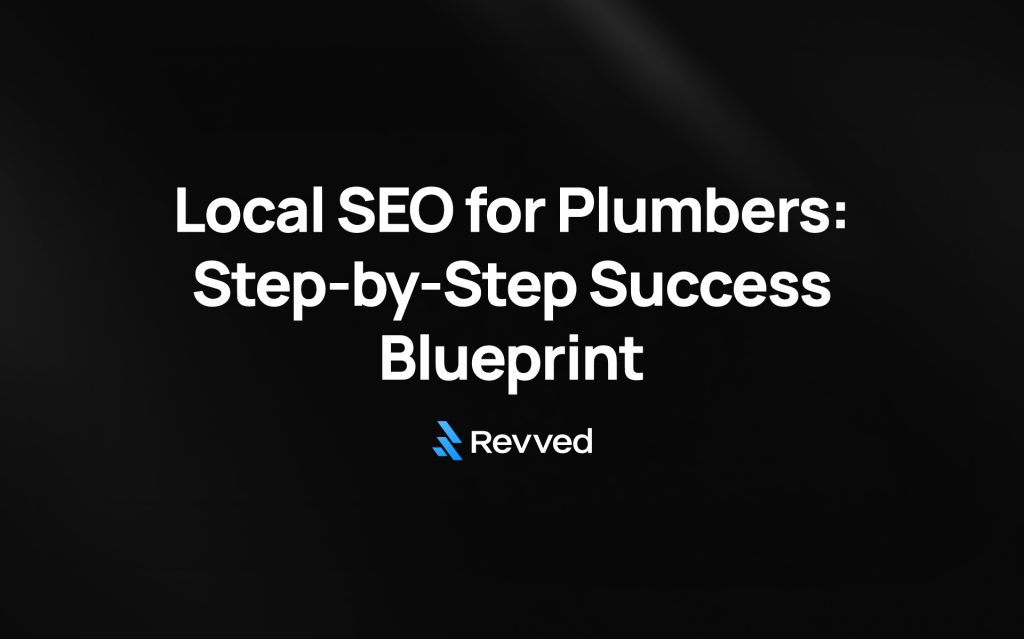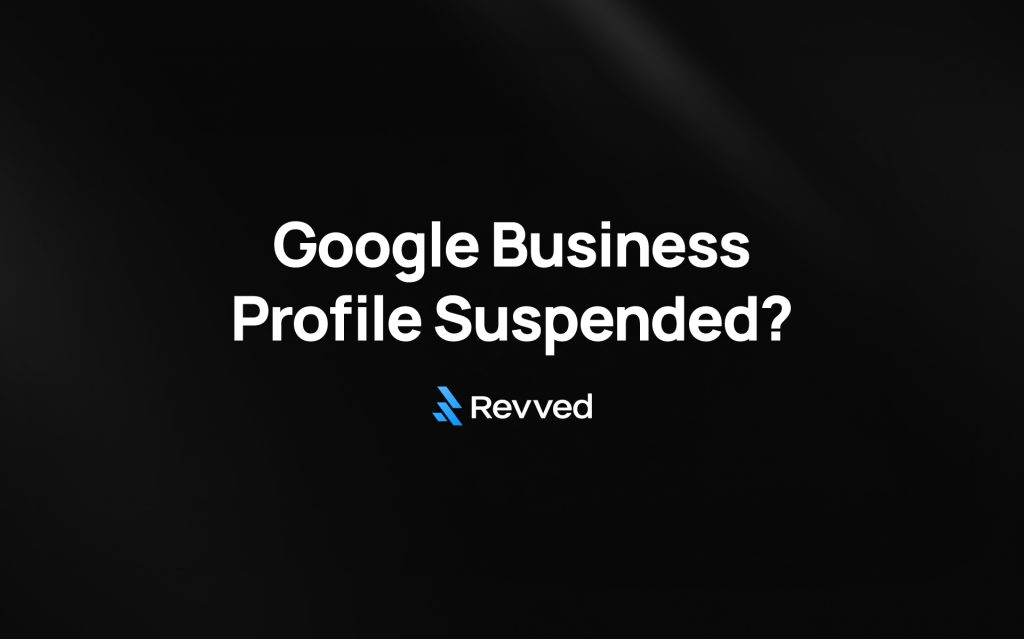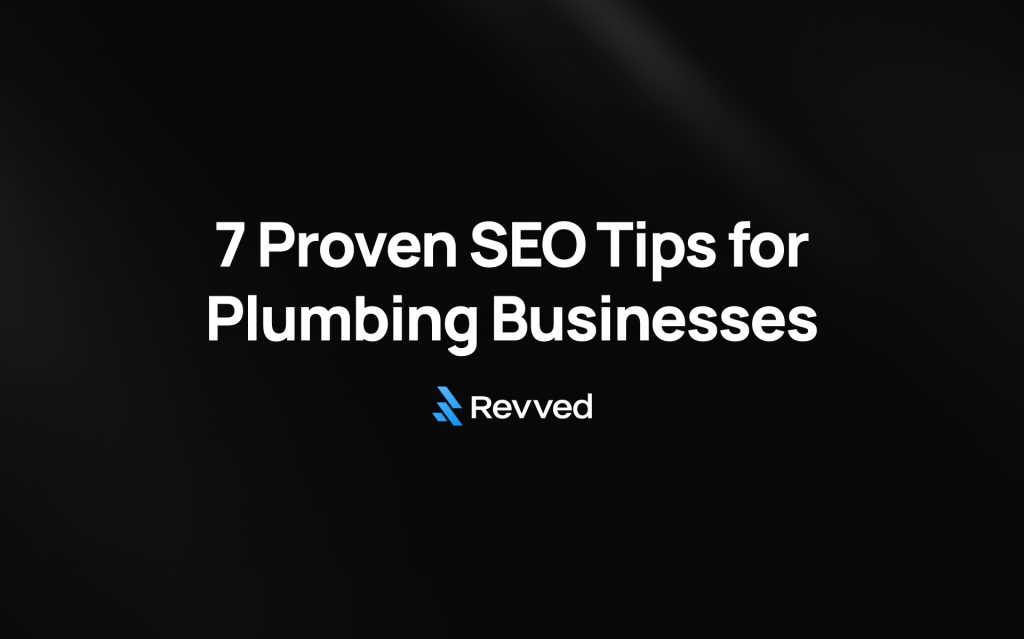Your plumbing business needs effective SEO to thrive in today’s digital world. Statistics show that 87% of consumers use Google and other search engines to find plumbing services. You could lose valuable business opportunities if local customers can’t find you online.
The numbers tell an interesting story. People search for “plumber near me” more than 135,000 times every month. This shows how SEO has become vital for plumbers to succeed locally. About 81% of potential customers read online reviews before they choose a plumber. The plumbing industry ranks among the most searched local services, so your search result rankings can make or break your revenue.
Let me walk you through some proven local SEO strategies that work specifically for plumbing businesses. This guide will help you outperform your competition and attract qualified local leads. You’ll learn exactly what to do, whether you’re new to digital marketing or want to boost your existing online presence.
What is Local SEO and Why It Matters for Plumbers
Local SEO helps your plumbing business stand out in search results within your service area. Unlike traditional advertising, it connects you with customers who are looking for plumbing services in your community right now.
How local SEO is different from general SEO
The main difference between local and general SEO lies in who you’re trying to reach. Traditional SEO targets people nationwide or worldwide, while local SEO for plumbers focuses on specific areas like your city or neighborhood. This targeted approach brings several benefits to your plumbing business.
Your plumbing business has a better chance to rank well with local SEO. You only compete with other plumbers in your area instead of every plumbing company nationwide. Small and medium-sized plumbing businesses can reach the top spots more easily.
Local SEO works well for plumbing businesses because it needs a physical address and face-to-face service. This lines up perfectly with service-area businesses like yours that visit homes to fix, install, or maintain plumbing systems.
Local SEO covers everything in traditional SEO and adds location-specific elements. Your strategy needs:
- Google Business Profile optimization
- Local citation building
- Location-specific keywords
- Review management
- Local content creation
Why local visibility brings more plumbing leads
Local search visibility creates qualified leads because people searching locally need help right away. Homeowners who look for plumbing services usually have urgent needs—often emergencies.
Here’s a fact: Half of all mobile searches for local businesses lead to a visit, call, or contact. This matters a lot for plumbing companies since most people who search for “plumber” need help quickly.
Local SEO creates a clear path between your business and homeowners who need help. A high ranking in local search results builds trust and makes your business the obvious choice during emergencies or new projects.
These leads convert better because potential customers actively look for solutions in your area. They’re ready to hire someone right away.
The rise of ‘plumber near me’ searches
People now search differently for plumbing services. The U.S. sees about 246,000 monthly searches for “plumbers near me”. This shows how customer behavior has changed.
Six out of ten mobile searchers contact businesses directly through Google Business Profile listings. People grab their phones immediately when pipes burst or faucets leak. Mobile optimization helps you catch these emergency leads.
“Near me” searches happen more often because plumbing needs are urgent. People search this way when they:

Enter your website below to start your proposal request!
- Face a plumbing emergency
- Need quick advice about a plumbing project
- Want a local plumber for regular maintenance
Research shows that 97% of people look for local businesses online. The move away from phone books means plumbing companies need strong local SEO to stay visible.
This trend creates both challenges and opportunities for plumbing businesses. Companies that become skilled at local SEO get ahead, while others lose business to more visible competitors.
Setting Up Your Google Business Profile the Right Way
Your Google Business Profile (GBP) is the life-blood of local SEO success for plumbers. Business profiles with photos get 42% more direction requests and 35% more website clicks compared to those without visuals. Here’s a step-by-step guide to make your profile work better.
Claim and verify your listing
Start by getting ownership of your business listing. Head to google.com/business and look up your plumbing company. You’ll see two options: click “Claim this business” if your business shows up, or select “Add your business to Google” to create a new listing.
Google needs to verify you’re the real owner after you claim the listing. You can get verified through:
- Postcard verification (most common – arrives within 14 days)
- Phone or text verification
- Email verification
- Video verification
Verification is vital—you won’t be able to edit your information or show up in search results without it. Once verified, you’ll have full control to update your profile and boost your local visibility.
Add accurate NAP (Name, Address, Phone)
NAP consistency makes or breaks your local SEO success. Your Name, Address, and Phone number should match exactly on your website, social profiles, and business directories. Small differences in formatting can make Google doubt your business’s authenticity.
Google might rank you lower if it spots different NAP details across platforms. Take time every three months to check your NAP information everywhere, starting with GBP, Yelp, and plumbing-specific directories.
Service businesses without a physical location should follow Google’s rules about setting their main address in their primary service area. Local phone numbers work better than toll-free ones to show your local presence.
Set service areas and business hours
Plumbers usually cover multiple areas or cities. Google lets you add up to 20 service areas using cities, postal codes, or neighborhoods. Keep your service radius within 2 hours of driving time from your location.
Customers trust businesses that post accurate hours. For 24/7 emergency plumbing services, you can:
- Set your business as open 24 hours
- List regular hours and highlight emergency availability in your description
Remember to update your hours during holidays or special situations. This shows you care about keeping customers informed.
Upload high-quality photos
Pictures make your profile stand out. Businesses with 100+ good photos are 713% more likely to get found by customers.
Great photos for plumbers include:
- Branded company vehicles
- Team members in uniform
- Before/after project shots
- Office or shop (if customers visit)
- Technicians at work (wearing safety gear)
- Company logo
Quality images show off your work and help customers trust you more. Before-and-after shots really showcase what you can do.
Use Google Posts to stay active
Google Posts work like social media updates right on your Business Profile. They show up under “Updates” and keep your listing fresh and engaging.
Plumbers can share these types of posts:
- Seasonal maintenance tips (winterizing pipes, spring checkups)
- Special deals or promotions
- Tips to avoid plumbing emergencies
- Staff spotlights and certifications
- Recent project successes (with customer approval)
Posts last about a week, so posting weekly shows Google your business stays active. Regular posts help you stand out from competitors who don’t use this feature.
A well-optimized Google Business Profile sets up your plumbing business to attract more qualified leads in your area. Each update and optimization helps build a stronger local SEO foundation.
Building a Plumbing Website That Converts Locally
Your plumbing business needs more than just a Google Business Profile to succeed with SEO. A properly optimized website works as your digital storefront around the clock. It turns visitors into customers even while you’re busy with repairs and maintenance.
Mobile-friendly design and fast load times
Your website must put mobile users first. About 60% of online searches happen on mobile devices. This number goes up for emergency plumbing needs, where over 80% of people use smartphones to look for ‘plumber near me’.
Google ranks websites using mobile-first indexing, which means mobile-friendly plumbing sites rank better than desktop-only versions. Your site should have:
- A responsive design that fits all screen sizes
- Big, easy-to-tap buttons and menus
- Simple navigation on mobile screens
- Quick-loading elements on both 4G and 5G networks
Page speed affects both user experience and search rankings substantially. Websites on Google’s first page load in just 1.65 seconds. If your site takes more than 3 seconds to load, 32% more visitors leave before seeing what you offer.
You can speed up your site by compressing images, reducing scripts, using browser caching, and adding speed plugins like WPRocket.
Clear calls-to-action and contact info
People with plumbing emergencies need quick solutions. Your website should have clear, well-placed calls-to-action (CTAs) that help visitors contact you easily.
Plumbers get better results with these CTAs:
- “Call Now” buttons that work with one tap
- Forms for emergency service requests
- “Get a Free Quote” buttons
- “Schedule Service” options
Red CTAs often lead to more conversions, according to studies. The best spots for CTAs are the top-right header, throughout service pages, and in headers or footers that stay visible while scrolling.
Your contact details should follow this checklist:
- Phone number clearly visible in the header
- Contact info on every page
- Clickable phone numbers for mobile users
- Business hours with emergency availability highlighted
- Simple contact forms with few fields
Note that personal touches boost conversions. CTAs like “We Can Fix YOUR Broken Garbage Disposal” connect better with potential customers.
Embed Google Maps and local trust signals
Adding Google Maps to your website helps your local SEO by showing search engines where you work. Research shows 67% of people prefer Google Maps over other navigation tools. It gives your customers a familiar way to find you.
Here’s how to add Google Maps:
- Find your business on Google Maps
- Click “Share” and pick “Embed a map”
- Copy the iframe code
- Add it to your contact page HTML
Build trust by adding these local elements:
- Customer reviews with names and locations
- Google review ratings (using schema markup)
- Local business group memberships
- Industry certificates and licenses
- Team photos from local jobs
- Before/after pictures of completed work
Putting these trust builders near your CTAs works better because 87% of consumers trust online reviews as much as personal recommendations.
These website improvements will help your plumbing business show up in local searches and turn more visitors into customers who need your services.
Creating Location and Service-Specific Pages
Location and service pages pack a powerful punch in plumbers SEO. Many businesses overlook this tactic that can boost your local visibility. These pages help search engines pinpoint where you work and what services you offer in each area.
Why separate pages matter for SEO
Plumbing businesses that serve multiple areas need dedicated location pages. These pages boost your chances of showing up in local search results. Yes, it is true – websites using schema markup rank four positions higher than those without it. Search engines favor businesses that create local content for each service area.
Many contractors make a big mistake. They put all services on one general page. This means they miss out on ranking for long-tail keywords that bring better conversions. Creating pages for each location helps you establish a digital presence without needing physical offices there.
These location-specific pages help you show up in “near me” searches from nearby suburbs and neighborhoods. They bridge the gap between your physical location and the areas you serve.
How to structure a service area page
Watch out for duplicate content across location pages. Google might see these as “doorway pages” and penalize your site if they look too similar with just city names changed.
Your service area page needs:
- A clear title with the location (e.g., “Affordable Drain Cleaning in [City]”)
- Unique content about that specific area
- Local landmarks or neighborhood references
- An embedded Google Map showing the service area
- Local customer testimonials
- Photos of completed projects in that area
- Clear contact information and compelling calls-to-action
Don’t use templates that just swap out city names. Single-location plumbing businesses should create a detailed “About Us” page that showcases their main service area.
A hub-and-spoke structure works best for SEO. Link your main service area page to individual city pages. Search engines will better understand where your business operates.
Using schema markup for local relevance
Schema markup might sound technical, but it helps your location pages rank better. This code helps search engines understand your business details and increases your chances of appearing in rich results.
Local Business Schema gives plumbers a real advantage. Search engines can display key information like:
- Name, Address, Phone number (NAP)
- Opening hours
- Service offerings
- Service areas
Adding schema markup helps your listings stand out in search results and gets more clicks. It also proves your business’s legitimacy through consistent NAP information across platforms.
JSON-LD format makes implementation easier than standard schema microdata. Your NAP details must match across all online platforms. Different information confuses search engines and potential customers.
Well-laid-out location pages combined with proper schema create a strong foundation. This helps your plumbing business attract more local search traffic and turn visitors into customers.
Doing Local Keyword Research That Actually Works
The success of local SEO for plumbers depends on finding the right keywords. Many business owners realize they need keywords but struggle to identify ones that attract qualified leads rather than random traffic.
Use Google Autocomplete and Keyword Planner
You don’t need expensive software to identify valuable plumbing keywords. Google’s free tools give an explanation of what potential customers actually search for.
Google Autocomplete shows instant keyword ideas as you type queries like “plumber in [city]” or “[city] plumbing services.” Real customers make these suggestions, which shows how locals describe their plumbing needs.
Google Keyword Planner offers detailed data about search volume and competition metrics for various terms. You can do these things after creating a Google Ads account:
- Enter your service area and broad keywords like your main services
- Filter results to find queries with clear local intent
- Find related searches tied to specific plumbing problems
These tools show that “plumbing” gets 6,120,000 monthly searches, while “plumber near me” gets 1,220,000 monthly searches. Without doubt, high-volume keywords show popular search terms, but they face tough competition.
Focus on service + city combinations
Plumbers get the best results by combining specific services with locations. Note that people rarely search just for “plumber” – they type “plumber in [city]” or “24/7 emergency plumber near me“.
Keyword combinations usually fit into three categories:
- Service + Location: “Water heater repair in [City]” or “Drain cleaning [Neighborhood]”
- Emergency + Location: “Emergency plumber near me” (40,500 monthly searches)
- Specific Problem + Location: “Fix clogged drain in [City]”
Your visibility improves when you create separate pages for each service-location combination. A business offering four services in three areas should ideally have 12 pages targeting these specific combinations.
Avoid keyword stuffing and over-optimization
After identifying target keywords, don’t give in to overusing them. Keyword stuffing can hurt your rankings severely when you force keywords unnaturally into content.
Google’s algorithms detect unnatural keyword usage and might penalize websites using this outdated approach. Your site could even face complete de-indexing in extreme cases.
Better alternatives to keyword stuffing include:
- Natural keyword placement within content
- Using variations and long-tail phrases
- Writing for humans first, search engines second
- Creating conversational content that answers real questions
Long-tail keywords such as “fast drain repair” or “shower drain clogged up” show higher commercial intent. These specific phrases often lead to better conversion rates, making them valuable for your plumbing SEO strategy.
Your plumbing business will attract more qualified leads through search engines and build trust with potential customers by using these keyword research tactics.
Getting Reviews and Managing Your Online Reputation
Online reviews now serve as digital word-of-mouth for plumbing businesses. 86% of consumers read reviews before hiring a local business. This number rises to 95% for people aged 18-34. Let’s get into how these reviews boost your visibility and what you can do to make use of them.
How reviews affect local rankings
Reviews do more than just sway potential customers—they directly shape your search rankings. Google’s local algorithm looks at review quality, quantity, and how recent they are when ranking plumbing companies in search results.
Plumbing companies with hundreds or thousands of Google reviews tend to show up more often in Google’s Map 3-Pack for local searches. This added visibility makes a big difference since 60% of mobile searchers contact businesses right from their local Google Business Profile listings.
Research shows that 57% of consumers will only use a business if it has 4 or more stars. But don’t worry too much about getting perfect ratings—people actually trust businesses more when they see ratings between 4.5 and 4.9.
Best times to ask for reviews
Getting the timing right matters when asking for customer feedback. The best time to ask comes right after you’ve finished a job well. Your customer still has the experience fresh in their mind and will likely give more detailed feedback.
These approaches work well when asking for reviews:
- Face-to-face requests: Thank your customers and ask them nicely to share their experience online
- Follow-up emails: Send a quick note with a direct link to your review page
- Text messages: Make use of text messages’ high open rates to request reviews
Ask for reviews after positive moments—like finishing a job ahead of schedule or when customers tell you they’re happy with your work. Make sure to send requests within 2-3 weeks after completing the service.
Automated review requests can boost your review count by up to 1,000%. You’ll get even better results by combining digital requests with in-person reminders.
Responding to negative reviews professionally
Every plumbing business gets negative feedback eventually. Nearly 90% of consumers talk about their bad experiences. Your response makes a difference—88% of consumers are more likely to choose a business that answers all reviews, while only 47% would consider one that stays silent.
Keep your responses professional when dealing with criticism. Thank your customers for feedback, address their concerns without getting defensive, and suggest solutions where possible. This approach helps fix specific issues and shows potential customers that you care about client satisfaction.
Keep in mind that 89% of consumers read how businesses respond to reviews. Harvard Business Review found that businesses who respond to reviews tend to get higher overall ratings.
Building a good reputation depends on getting new reviews regularly so positive feedback outweighs the occasional negative review. Since 49% of consumers want at least a four-star rating, a strong review profile plays a vital role in your plumbing company’s success.
Building Local Citations and Backlinks
Your plumbing business needs more than just a great website and good reviews. A strong network of local citations and backlinks tells search engines that your business is legitimate and relevant.
What are citations and why they matter
Local citations are online mentions of your business information that show your name, address, and phone number (NAP). These citations help search engines verify that your plumbing business exists and can be trusted. Moz reports that local citations rank as the fifth most important factor in local search rankings.
You’ll find citations in two forms: structured listings in business directories and unstructured mentions on websites or blogs. Google ranks you higher when these citations stay consistent across platforms, and this builds trust in your brand.
Citations help your business rank better in local searches and let potential customers find your services online. A well-managed citation profile makes your website more authoritative and helps customers find you easily.
Top directories for plumbing companies
These high-value directories give plumbers the best results:
- Essential listings: Google Business Profile, Yelp, Angi, HomeAdvisor
- Industry-specific directories: HomeAdvisor, Thumbtack, Porch, Houzz, BuildZoom
- General business directories: YellowPages, BBB.org, Superpages, Manta
Your NAP details must stay consistent whatever directories you pick. Different or wrong information across citations can hurt your rankings. A quarterly audit ensures your business information stays accurate everywhere.
How to earn backlinks from local sources
Backlinks work like digital referrals and show search engines that your plumbing website can be trusted. Local backlinks really matter when you want to be visible in your service area.
Here’s how to earn quality backlinks:
- Join local organizations: Chamber of Commerce and BBB memberships give you valuable links and build credibility
- Partner with suppliers: Authorized dealer listings on supplier’s websites create relevant industry connections
- Connect with local businesses: Work together with HVAC companies and similar services to exchange links
- Sponsor community events: Local charity runs or school events can get you links from their websites
Research shows that local directory links make a big difference in your Google Search and Google Maps rankings. Good local backlinks and consistent citations build a digital foundation that improves your plumbing company’s visibility where it counts most.
Tracking Your Local SEO Performance
Your plumbing business should track performance to maximize local SEO investment. You can’t improve what you don’t measure, and working without tracking is like operating in the dark.
Using Google Search Console and Analytics
Google Search Console helps you monitor your website’s search performance. This free tool will give a clear picture of your site’s performance, traffic-driving keywords, and areas that need work. Google Analytics adds to this by showing you visitor behavior and marketing results.
Google Analytics 4 tracks everything in your metrics including:
- New vs. returning visitors (customer interaction patterns)
- Bounce rates (how quickly visitors leave)
- Conversion rates (service bookings, calls)
- Pageviews (most popular content)
Monitor keyword rankings and traffic sources
Your organic rankings show how well your marketing campaigns work. Tools like Google Search Console or RankRanger help track your plumbing website’s keyword performance. The core team should also check which channels bring qualified leads to your site regularly.
Adjusting strategy based on data
Data-driven decisions are the foundations of better results. Weekly or monthly performance reviews help spot areas to improve. This ongoing analysis ended up helping refine content strategy. You can focus resources on channels that perform well and optimize underperforming pages.
Do you need expert help to boost your plumbing business’s online visibility? Contact us to get a proposal that fits your local SEO needs.
Conclusion
Local SEO has become a game-changer for plumbing businesses looking to stand out in today’s digital world. This piece shows you how targeted strategies can boost your visibility to potential customers searching for plumbing services nearby. These tactics work together to create a detailed plan that guides qualified leads straight to your business.
Your plumbing business’s SEO success starts with a well-optimized Google Business Profile – your most powerful tool for local visibility. A mobile-friendly website with location-specific pages and consistent NAP information across directories strengthens your digital presence. Search engines understand your services and coverage area better through location-specific keywords.
Customer reviews work as digital word-of-mouth for your plumbing business. Most potential clients read these reviews before they reach out. Your bottom line gets a direct boost when you actively manage your online reputation by collecting reviews and responding professionally to feedback.
SEO needs constant attention rather than a one-time fix. Tools like Google Search Console and Analytics help you track performance and refine your strategy based on real data. Your local search rankings improve steadily with this approach.
These proven local SEO techniques give your plumbing business a real edge in your service area. Want to take your plumbing business to new heights with expert local SEO? Let us create a proposal that fits your business’s needs and service area perfectly.
Key Takeaways
Master these essential local SEO strategies to dominate your plumbing market and capture more qualified leads in your service area.
- Optimize your Google Business Profile completely – Include accurate NAP info, service areas, high-quality photos, and regular Google Posts to increase visibility by up to 713%
- Create location-specific website pages – Build separate pages for each service area and service type to capture “plumber near me” searches (135,000+ monthly searches)
- Actively collect and manage customer reviews – 86% of consumers read reviews before hiring plumbers; maintain 4+ star rating and respond professionally to all feedback
- Build consistent local citations across directories – List your business on Google, Yelp, HomeAdvisor, and industry-specific platforms with identical NAP information everywhere
- Target service + location keyword combinations – Focus on phrases like “drain cleaning [city]” rather than generic terms to attract higher-converting local traffic
- Track performance with Google Analytics and Search Console – Monitor keyword rankings, traffic sources, and conversion rates to continuously refine your strategy based on real data
When implemented together, these tactics create a powerful local SEO foundation that positions your plumbing business ahead of competitors and connects you with customers actively seeking your services in your area.
FAQs
How important is local SEO for plumbing businesses in 2025?
Local SEO remains crucial for plumbing businesses in 2025. With 87% of consumers using search engines to find local services, optimizing your online presence helps you appear in “plumber near me” searches and attract more qualified leads in your service area.
What are the key elements of an effective Google Business Profile for plumbers?
An effective Google Business Profile for plumbers includes accurate NAP (Name, Address, Phone) information, service areas, business hours, high-quality photos of your work, and regular Google Posts. Optimizing these elements can increase your visibility by up to 713%.
How can plumbers get more positive online reviews?
To get more positive reviews, ask satisfied customers immediately after completing a job. Use a combination of face-to-face requests, follow-up emails, and text messages. Implement an automated review request system, which can increase reviews by up to 1,000%.
What types of content should plumbers create for their websites?
Plumbers should create location and service-specific pages for their websites. This includes pages for each service area and type of service offered. Additionally, include before/after photos of projects, customer testimonials, and educational content about preventing plumbing emergencies.
How often should plumbers monitor their local SEO performance?
Plumbers should monitor their local SEO performance regularly, ideally on a weekly or monthly basis. Use tools like Google Search Console and Analytics to track keyword rankings, traffic sources, and conversion rates. This ongoing analysis allows you to refine your strategy and focus resources on high-performing marketing channels.




![Digital Marketing for Plumbers: What Actually Works in 2025 [Real Results]](https://revved.digital/wp-content/uploads/2025/10/Digital-Marketing-for-Plumbers-What-Actually-Works-1024x639.jpg)
![Why Local SEO for Plumbers Is Your Best Investment in 2025 [Expert Data]](https://revved.digital/wp-content/uploads/2025/10/Why-Local-SEO-for-Plumbers-Is-Your-Best-Investment-1024x639.jpg)






